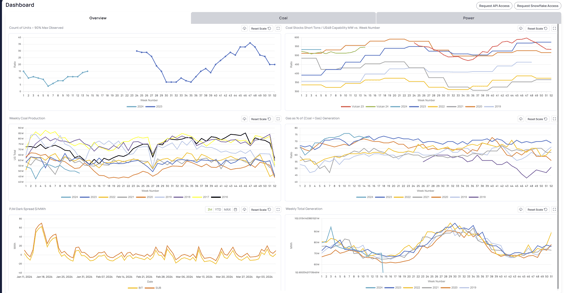*|MC:SUBJECT|*
Vulcan Insights: Vulcan Outperforms EIA-923 in Accuracy
*|MC_PREVIEW_TEXT|*

Vulcan Demonstrates Superior Accuracy Compared to EIA-923 Methodology for Coal Inventory Tracking
The EIA recently released a comprehensive dataset of coal plant stock levels for 2022.
Previously, the most recent available data only covered until December 2021. Traditionally, many industry participants rely on the EIA-923 "consumed and received" method to estimate ongoing inventory levels. However, this method has been shown to produce significant variances at the plant level, rendering it unreliable for precise inventory tracking.
The newly released EIA data allows us to definitively demonstrate the superior accuracy of Vulcan's volume calculations compared to the EIA-923 methodology.

We employ reference ratios to normalize data obtained from Vulcan's method and align it with the EIA-923 data.
Ideally, after incorporating the update, the adjustments required for normalization should decrease, signifying convergence with Vulcan's calculations. This is precisely what we observe: the average adjustment factor has decreased from 0.9 to 0.95, with 1 representing a perfect match.
In simpler terms, using Vulcan delivers significantly more accurate plant-level data compared to the EIA-923 "consumed and received" method.
Dramatic Shifts in Inventory Levels

By utilizing Vulcan, you gain access to these valuable insights 2-3 months ahead of the release of official market data. This significant head start allows you to make informed adjustments to your gas demand forecasts from the power sector, giving you a competitive edge in the market.

